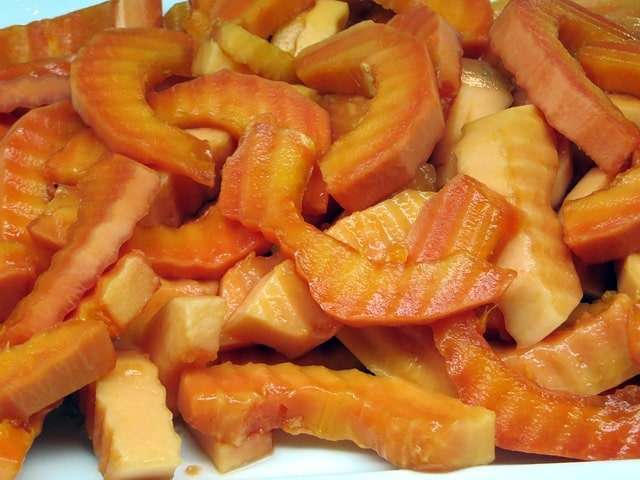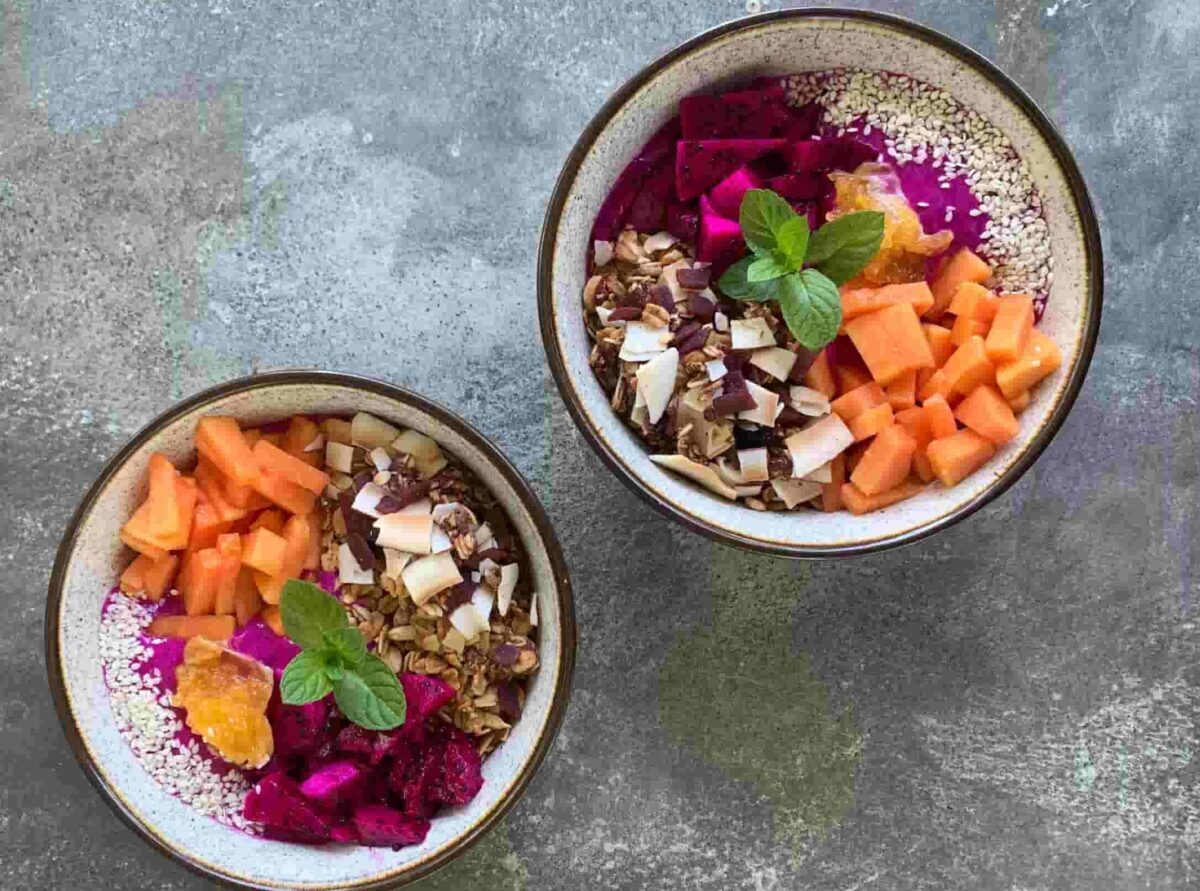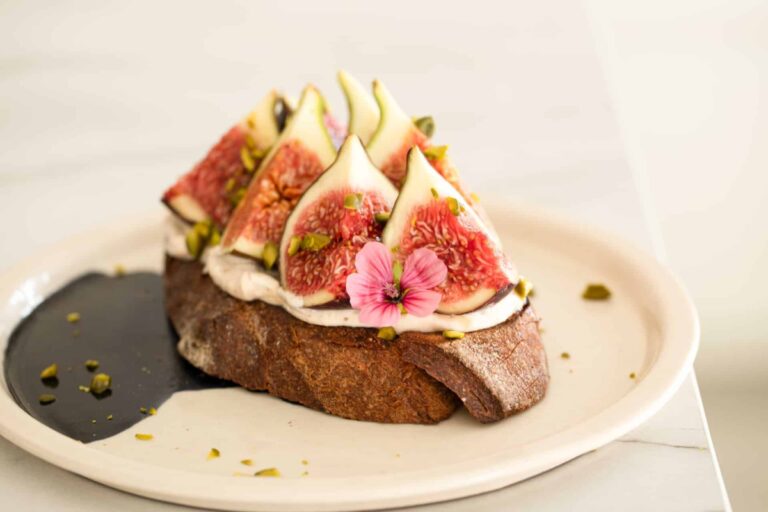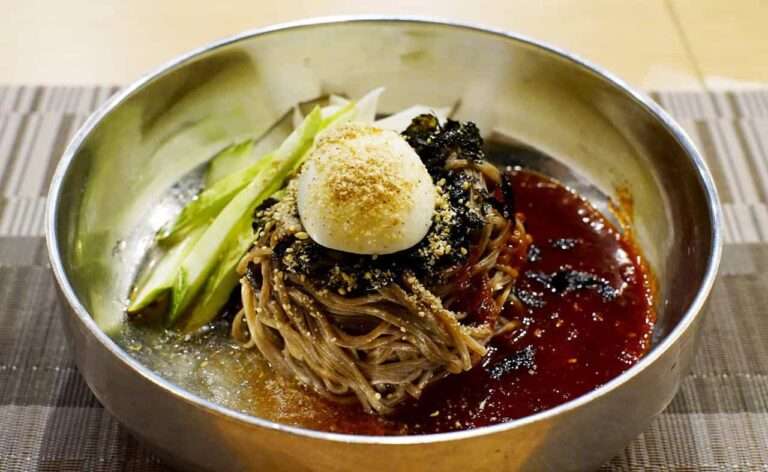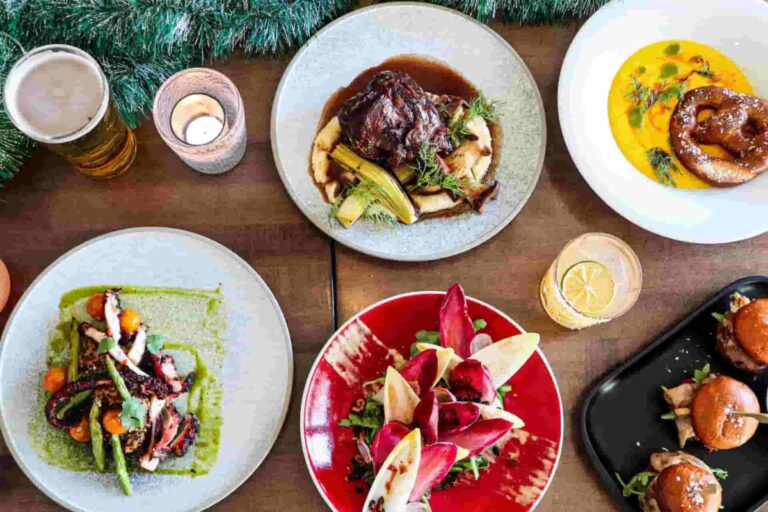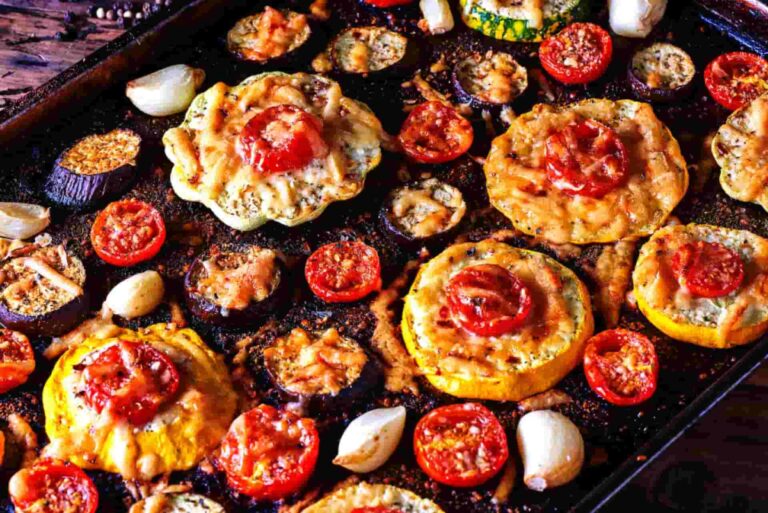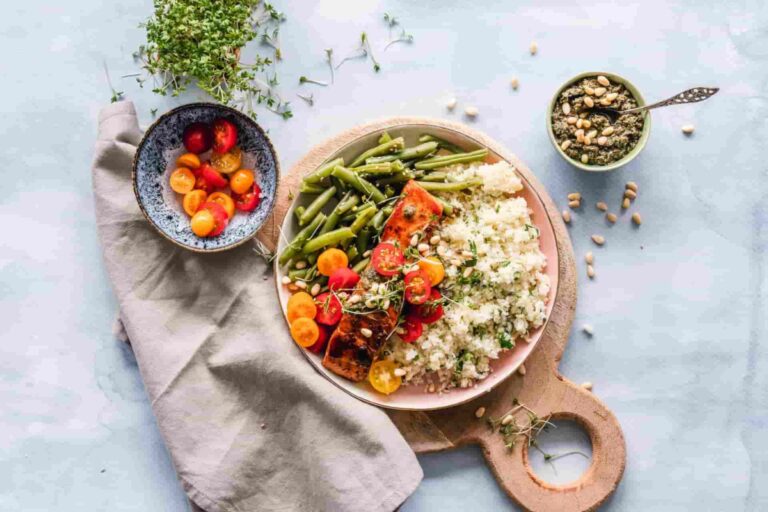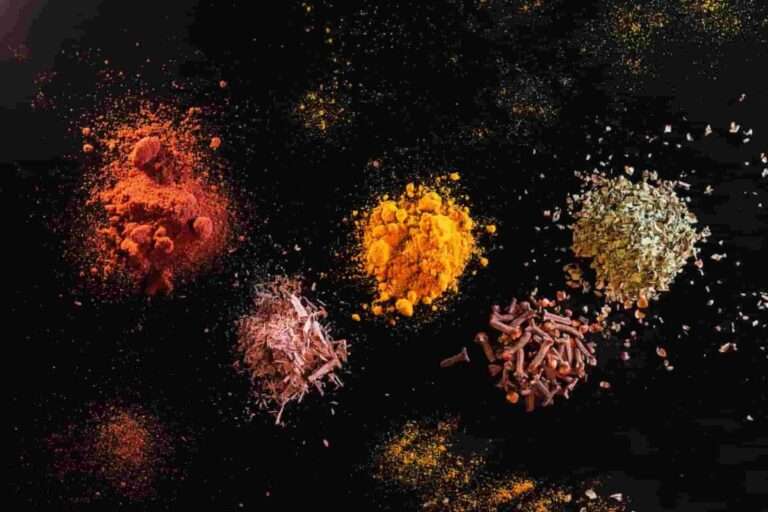Papaya 101-kitchen insights and benefits
Did you know that papaya has just moved up the ranks to become the fourth tropical fruit that is produced the most in the world?
- The top three places on the list are occupied by bananas, oranges, and mangoes, respectively. The nations of India, Brazil, Indonesia, Nigeria, and Mexico are the ones that have the biggest output of papayas for commercial purposes.
- The papayas that are most regularly available in grocery stores are of the Hawaiian kind. Depending on the kind, the flesh is either brilliant orange or pinkish in colour, and there is a cluster of tiny black seeds in the middle.
- The Hawaiian varieties of papaya are much smaller than the Mexican varieties. The colour of the flesh may vary from yellow to orange to pink. The taste is not as robust as that of the Hawaiian papaya, but it is still really tasty. When it has reached its full maturity, a papaya will be juicy, sweet, and reminiscent in flavour of a melon. The taste of the seeds, which may be eaten, is hot and peppery, similar to that of black pepper.
- Cooking the unripe green fruit, which is often used in curries, salads, and stews, makes it edible. Raw and cooked green papaya are both used in the cuisine of Southeast Asian countries. An enzyme known as papain may be found in high concentrations in green papaya fruit and in the latex of the tree. For thousands of years, people have used it as a natural meat tenderizer, and even today, it is utilised as a component in a lot of different commercial meat tenderizers.
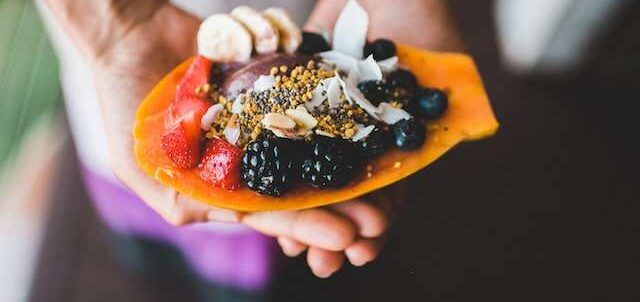
Papaya nutrition values and health benefits
- One serving of papaya contains 88.3 mg of vitamin C, making it an excellent source of this nutrient. Because the daily recommended intake of vitamin C ranges from 75 to 90 mg for most persons, the amount of vitamin C that may be satisfied by eating 1 cup of papaya is close to equal to the amount that is required. In addition to being a good source of vitamin A, papayas are also an excellent source of the carotenoid lycopene.
- Papayas, because of the high level of nutrients that they contain, are beneficial to one’s health on many levels. Your cells will remain in good condition and be protected from injury thanks to the powerful antioxidant vitamins included in papaya.
- Our bodies produce collagen, which is a connective tissue, using vitamin C as a precursor. Consuming an adequate amount of vitamin C may boost the capacity of your skin to heal itself. This is due to the fact that collagen is an essential component that is necessary for skin integrity. Vitamin C is essential to the development of robust connective tissues and the effective recovery from injuries in our bodies. You may easily accomplish all of your everyday objectives by eating papaya.
- Fruits, vegetables, and some kinds of protein meals are all good sources of beta carotene, which is a type of vitamin A. Papayas are a great source of vitamin A, which is necessary for healthy eyesight and are essential to its maintenance. Research have shown that the beta-carotene found in papayas is three times more bioavailable than the beta-carotene found in carrots or tomatoes. You may have heard that carrots are beneficial for your eyes, but these studies reveal that papayas are.
- Papayas, similar to the majority of other fruits and vegetables, have a high amount of fibre, which is necessary for proper digestion. In addition to this primary advantage, papayas have another benefit: they contain the enzyme papain. Papain is an enzyme that aids in the breakdown of proteins. If you have trouble chewing or digesting meat, tenderising the meat with papain before boiling it will make it easier for you to consume.
- Papayas are rich in fibre, which is beneficial to overall heart health. Consuming an adequate amount of fibre, particularly in the form of fruits and vegetables, is associated with a lower risk of developing cardiovascular disease. In addition, fibre helps you feel fuller for longer, which is beneficial for maintaining a healthy weight. In addition, papayas include potassium, magnesium, and pantothenic acid, all of which are important for maintaining healthy cardiovascular function.
- In addition to being good for your general health, papaya has been shown to have the potential to help your skin seem more toned and younger. It is believed that excessive activity of free radicals is to blame for the majority of the skin damage that comes with becoming older, including wrinkling, sagging, and other forms of damage to the skin. The antioxidants vitamin C and lycopene that are contained in papaya help to maintain your skin and may even help to reduce the look of wrinkles. Papayas can be bought in most grocery stores.
- Papaya allergies are possible. According to some reports, those who are sensitive to mango, pistachios, or cashews may also have an allergic reaction when exposed to papaya. There is some evidence to suggest that latex allergies and papaya allergies are linked. Talk to your healthcare professional about getting a tailored diagnosis if you think you may have an allergic reaction to papaya or another food.
100g of papaya has 43 calories (179kj), 0.5g protein, 0.3g fat, and 11g carbs, including 1.7g fibre.
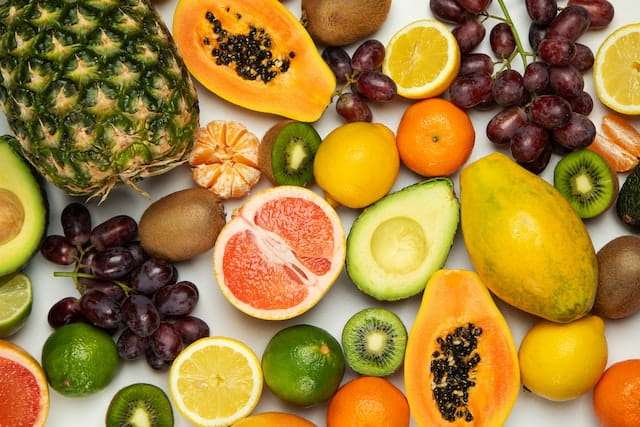
How to store papaya and how to buy them
- Leave unripe papayas at room temperature. It will take a few days for them to mature, depending on the kind of fruit. It will take considerably longer for those that are fully green and solid than for those that are partly yellow and more delicate to the touch. Make it a habit to check on your unripe papayas once a day at the very least. Put the fruit in a paper bag with a banana or another fruit that produces ethylene, such as an apple, and this will speed up the process of ripening the fruit. The gas will make everything move more quickly.
- If you refrigerate the papaya once it has reached its peak flavour, you may enjoy it for another day or so. It is important to note that this does not necessarily imply that it will get spoiled on the third day. Instead, depending on the fruit, it will take anywhere from five to seven days to reach an overripe state. If you choose to let the ripe papaya sit out on the counter instead of putting it in the refrigerator, you should anticipate that its quality will begin to quickly deteriorate within a few of days. If you seal the papaya properly, you should be able to preserve it for at least two to three days after cutting it.
- If you need more time to store the fruit than a week or two would provide, you may want to think about freezing it. Papaya may most certainly be frozen, but it is important to keep in mind the potential drawbacks of doing so. The texture of the papaya flesh is more tender after it has been frozen and thawed after being frozen. This indicates that the fruit pieces will have a watery texture and a mushy consistency. That is far from ideal for anything like a fruit salad or a similar dish, but it should not be an issue for you while making a smoothie.
- If you want your papaya to keep its form better, go with halfway thawed rather than totally defrosted when you defrost it. And consume that salad as quickly as possible since the fruit will continue to thaw and lose its texture if you wait.
- First and foremost, keep in mind that if you cut your papaya before it has reached its full maturity, the yellowish section that is next to the rind will most likely have an unpleasant flavour. That is perfectly natural, and it in no way indicates that the papaya has gone bad or anything like that; just chop those portions off and enjoy the remainder of the papaya.
- Having said that, determining whether or not the papaya you have is safe to consume is not too difficult. If it is spoiled, you will notice at least one of the signs indicators that fruit goes rotten before it does so. These are the ones:
- Discoloured marks and splotches: It is normal for papaya skin to have a few black spots, but if they cover the whole fruit, you should throw it out since it is spoiled.
- Mould: Consuming papaya that is mouldy on the inside might result in food illness. If you notice mould growing inside of a sliced piece of papaya, you should dispose of the fruit and start again. Mould may sometimes grow on sliced pieces of fruit that are kept in the refrigerator for long periods of time.
- Papaya with a skin that is both very tender and sunken: If the papaya’s rind is mushy and melting, it is beyond its prime and should be thrown away.
- Odour or fermentation: When the papaya has been allowed to rot for a sufficient amount of time, an odour that can only be described as fermented will begin to emanate from it. In the event that your papaya is giving off a putrid stench, you are required to discard it.
- Bitter taste: You may probably discover that your papaya has a sour flavour rather often. It indicates that the papaya has lost its freshness and should not be consumed anymore. Do not even attempt to consume it by sugaring it beforehand.
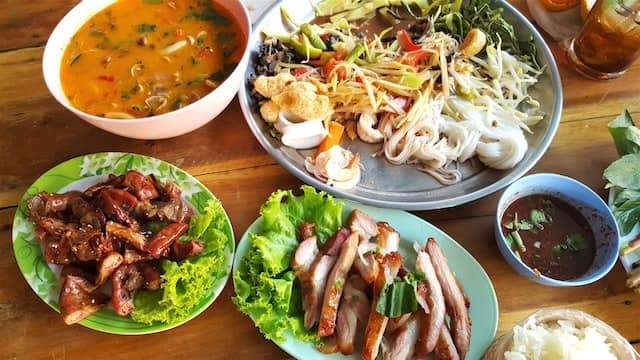
Cooking techniques, secrets, and tips from the kitchen
- If someone from the West were to try chicken Tinola for the first time, they may label it a soup. On the other hand, in the Philippines, there are some types of soup that are considered to be main courses rather than appetisers. While the chicken and veggies are eaten with rice, the broth is consumed in the same manner that any other soup would be. Chicken Tinola is a thick soup that has three primary ingredients: chicken, green papaya, and chili leaves (often the leaves of the bird’s eye chile plant). With order to prepare Tinola, chicken pieces are first browned in ginger, garlic, and shallots that have been sautéed, and then they are boiled in stock. During the last fifteen minutes of cooking, wedges of green papaya are added to the dish The soup is finished off with the addition of the chile leaves once the heat has been turned off.
- The term “chutney” refers to an exceedingly broad category of condiments that may include everything from what some people may refer to as a relish or salsa to jelly or jam. They might have a chunky or smooth consistency, and their tastes and levels of spice can vary greatly. In this recipe for papaya and raisin chutney, the sweet papaya is given a little additional bite by using spices that are warm and soothing, such as ginger and dry mustard. The texture of the chutney is improved by the addition of golden raisins. This chutney is not only simple to prepare but also pairs well with pork and poultry and can even be used as a spread for bread. The use of freshly prepared ingredients is essential when producing chutneys at home. The beginning of summer and the end of autumn are the best times to buy papaya, despite the fact that the fruit is available year-round at grocery shops.
- Green papaya and a spicy dressing made from ground chilli peppers are the two main ingredients in the traditional Thai salad known as som tam. This salad is great as either a side dish or a lighter main course because of the variety of tastes that erupt in your tongue when you eat it, including sweet, sour, crunchy, and spicy notes. The traditional method of preparing Som Tam involves using a mortar and pestle, which can be rather entertaining at times. On the other hand, it is quite laborious and a bit of a mess. Make use of your well-equipped food processor or chopper to make the procedure of putting together this delectable green papaya salad a lot less laborious. You may make it into a whole dinner by topping it with shrimp or chicken, or you can eat it with sticky rice like they do in Thailand, which is a common practise there.
- In the Dominican Republic, where it is known as lechosa, papaya is a widely consumed fruit that is often processed into a “milkshake,” which is equivalent to what we refer to as a smoothie in the United States. The use of papaya in a dish that also includes milk, vanilla, and ice capitalises on the fruit is natural smell and sweetness, which is comparable to that of mango but is not as sour. On a hot day, a batida de lechosa will not only help you stay nice and cool, but it may also end up being one of your favourite summer desserts.
- When used in a marinade, papaya contributes one of nature’s most potent tenderizers. Papaya is very effective when used on tough portions of meat.
- Papaya has to be cut into tiny pieces. Combine with the rest of the ingredients in a food processor. About 10 to 12 pulses should do it to have a smooth purée. If it is too thick, add a little water, a few teaspoons at a time.
- Put in a jar with a lid and chill for 12 to 24 hours before using. Marinate meat for at least six hours, and chicken for around two. After the first preparation, the combination may be stored in the refrigerator for four or five days.
- This marinade is fantastic for chewy types of meat because to the papain enzyme found in papayas.
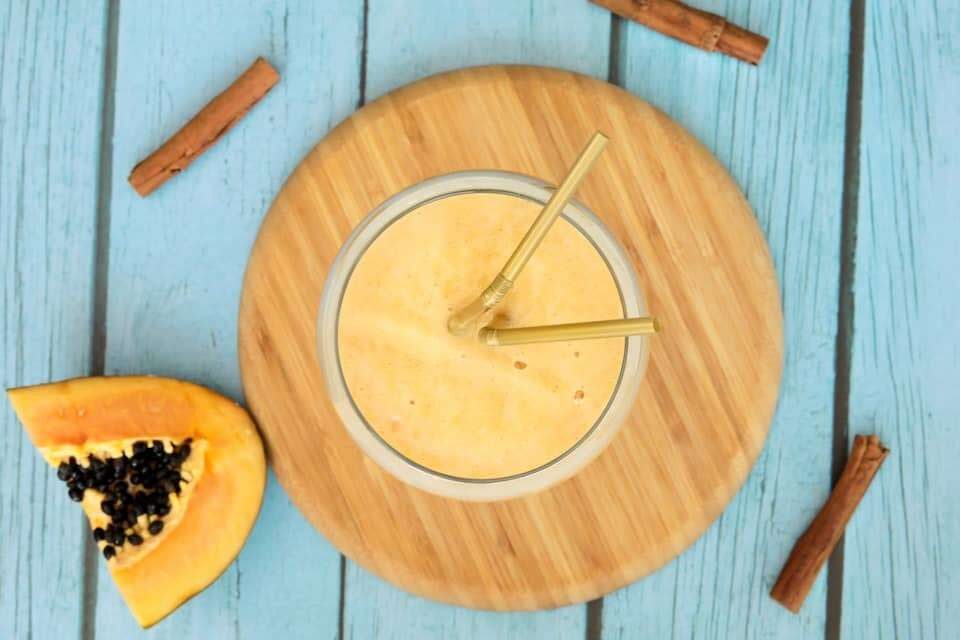
History of papaya from the beginning until today
- Raw and cooked green papaya are both used in the cuisine of Southeast Asian countries. Young papaya leaves are prepared in a manner similar to that of spinach by steaming them in some regions of Asia.
- The Manila galleons were responsible for bringing papayas to the Philippine islands, which is how they eventually made their way into Filipino cuisine. It is usual practise to julienne unripe or nearly ripe papayas (which have orange flesh but are still firm and green) in order to pickle them into atchara, a condiment that is often served as a side dish to salty foods. Nearly ripe papayas may also be eaten fresh as ensaladang papaya (papaya salad), or diced and eaten dipped in vinegar or salt. Another option is to consume them as a snack by themselves. In the cuisines of northern Luzon, green papaya is often used as an ingredient or filler in savoury foods such as okoy, tinola, ginataan, lumpia, and empanada. Green papaya is also commonly used in other Filipino meals.
- The unripe green fruits and young leaves are cooked in order to be used as part of the lalab salad in Indonesian cuisine. On the other hand, the flower buds are sautéed and stir-fried with chilies and green tomatoes in order to make the Minahasan papaya flower veggie dish.
- In the cuisines of Laos and Thailand, unripe green papayas are used to produce a sort of spicy salad that is called tam maak hoong in Laos and som tam in Thailand. Both of these dishes have the same name. In addition to that, you may find it in Thai curries like kaeng som.
- Unripe fruits are put to use in the production of candies and preserves in both Brazil and Paraguay.
